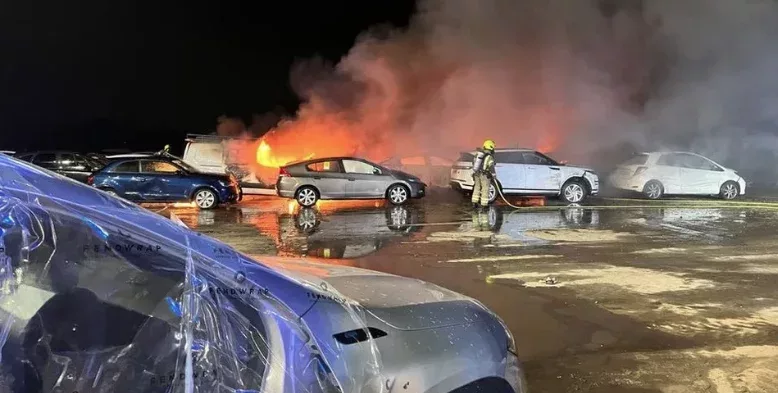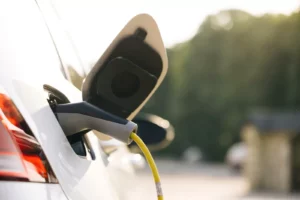Essex Fire and Rescue Service is focusing on one area of “top-up” training for its crews. In recent years, this has included sessions on firefighting at height and managing hazardous materials. This year, a new course is being introduced on how to deal with electric vehicle fires.
Station manager Terry Maher has recently taken on a new role within the fire service, the BBC News in Essex reports. A hazardous material expert, he is now the service’s lead officer on tackling lithium-ion battery fires.
His new responsibility comes as the number of electric vehicles (EVs) on UK roads hits more than 1m. And the number is rising fast. And while Mr Maher stresses EV fires are rare, they pose a challenge quite unlike a conventionally fuelled vehicle fire.
The batteries – if they are the source of the fire – are often hard to reach, he says, and EV fires can create directional jet flames and vapour cloud explosions. EV fires also create a variety of toxic chemicals both in the air and in the water run-off if firefighters use hoses to keep the flames in check.
“Our preferred approach is to let them burn themselves out,” says Mr Maher.
Not all recovery companies will take damaged cars away, says Mr Maher, either because they are concerned about handling a burned EV or because they do not have the right recovery vehicles (EVs cannot be towed, because the turning of the back wheels generates power).
In one incident last year involving a Tesla, police and firefighters had to wait more than four hours for a specialist recovery vehicle to arrive.
Electric cars are also known to reignite “up to two or three weeks after the initial fire”, says Mr Maher, meaning they have to be “quarantined” away from other vehicles even after the fire appears to have been put out.
Click HERE for the full story.
(Picture – Essex Fire & Rescue Service)























